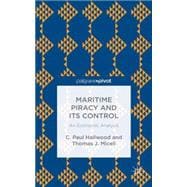Modern day maritime piracy is a world-wide phenomenon. Over the last ten years, about 3,000 pirate attacks, actual or attempted, have been reported, but with some recent decline due to the effort of naval task forces as well as a very large increase in the use of on-board armed guards. Somali pirates principally operate a capture-to-ransom model, with ransoms of up to $5.5 million per incident being collected. Elsewhere in the world robbery is the main motive. The overall economic cost of maritime piracy in 2012 was estimated at $6 billion.
Maritime Piracy and its Control develops an economic approach to the problem of modern-day maritime piracy with the goal of assessing the effectiveness of remedies aimed at reducing the incidence of piracy. Miceli and Hallwood's theoretical framework is based on a standard Becker-type model of law enforcement, extended to consider the effort level of pirates to locate and attack target vessels, and of shippers to invest in precautions to avoid contact. The model provides the basis for prescribing an optimal enforcement policy whose goal is to minimize the cost of piracy to international shipping. It also serves as a benchmark for evaluating actual enforcement efforts within the context of international law and concludes with several proposals aimed at improving enforcement.
Maritime Piracy and its Control develops an economic approach to the problem of modern-day maritime piracy with the goal of assessing the effectiveness of remedies aimed at reducing the incidence of piracy. Miceli and Hallwood's theoretical framework is based on a standard Becker-type model of law enforcement, extended to consider the effort level of pirates to locate and attack target vessels, and of shippers to invest in precautions to avoid contact. The model provides the basis for prescribing an optimal enforcement policy whose goal is to minimize the cost of piracy to international shipping. It also serves as a benchmark for evaluating actual enforcement efforts within the context of international law and concludes with several proposals aimed at improving enforcement.








